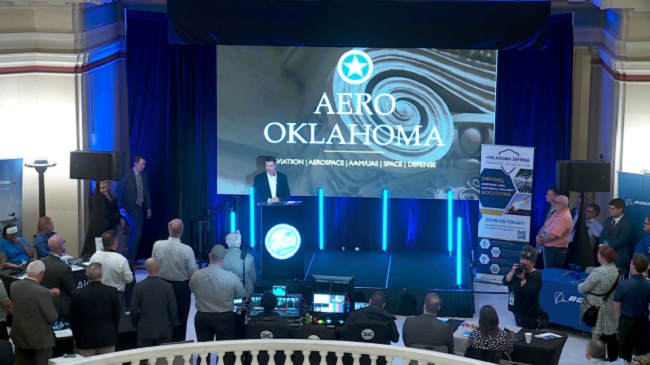Enid, OK – Oklahoma’s aerospace industry, the state’s second-largest and fastest-growing sector, took center stage at the Oklahoma State Capitol on Wednesday, as state leaders and industry experts gathered to celebrate its significant impact on the economy.
Brigadier General Chris Eason of the Oklahoma Air National Guard remarked on the current “time of great opportunity” for the aerospace sector, acknowledging the long-standing history the state has in aviation. “Some of the aviation pioneers were in Oklahoma,” said Clay Pearce, an engineering site leader at Spirit Aerosystems, referring to the state’s role as a birthplace for early aviation innovations.
With an annual economic impact of $44 million, the aerospace industry in Oklahoma is thriving. According to the Aerospace Commerce Economic Services Program (ACES) within the Oklahoma Department of Commerce, the sector continues to expand at a rapid pace. “It’s really gratifying to see the growth that’s occurred commensurate with the growth in the industry itself,” said Donald Wetekam, Deputy Executive Director of the Oklahoma Aerospace and Defense Innovation Institute.
However, the future of the industry could be influenced by external factors, particularly trade tariffs introduced by the federal government. Leshia Pearson, Director of ACES, expressed concern that these tariffs might significantly affect Oklahoma’s aerospace exports, especially to countries like Canada, which has been a major buyer of Oklahoma-made aerospace products.
In 2023, aircraft and spacecraft parts were among the state’s top exports, contributing over $860 million to the economy. The growth in aerospace exports has been remarkable, with a 125 percent increase over the past decade. “Our aerospace exports have really taken off in the last ten years,” Pearson noted. Canada, in particular, has remained the dominant foreign buyer, underscoring the importance of international trade for the industry.
However, Pearson pointed out that tariffs on imports, particularly turbojet engines, could disrupt the supply chain. In 2024 alone, turbojet engine imports to Oklahoma totaled more than $450 million. Any reciprocal tariffs could also complicate the export of the state’s top products, including aircraft parts, which totaled more than $1.3 billion in 2024.
As the aerospace sector in Oklahoma continues to grow, industry leaders remain cautious about the potential ripple effects of these tariff policies. While the state’s aerospace industry has experienced significant growth, uncertainties around trade relations could pose new challenges for businesses that depend on international markets.
The state’s leaders and aerospace professionals are keeping a close watch on the evolving tariff situation, hoping that the industry’s momentum will not be hindered by trade tensions. As the fastest-growing sector in Oklahoma, the future of the aerospace industry remains uncertain but filled with both potential and challenges.

